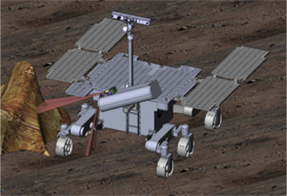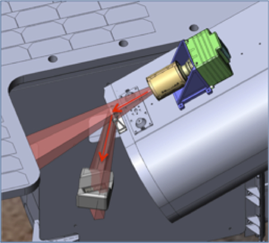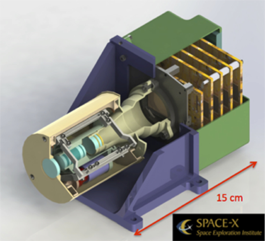Music Copyright: White Cube Records
Instrument operations
Because the main science objective of ExoMars concerns the search for life, whose traces on Mars are likely to be cryptic, close-up observations of the rocks and granular regolith will be critical to the decision as whether to drill and sample the nearby underlying materials. Thus, CLUPI is the essential final step in the choice of the drilling site. But not only are CLUPI’s observations of the rock outcrops important for the geological information they will provide, they also serve other purposes. CLUPI will:
- observe the drilling area before the drilling operation, with a resolution down to 8 µm/pixel,
- be able to observe the placement of the drill head, as well as the fines that come out of the drill hole, including any colour stratification linked to lithological changes with depth, with a resolution of 21 µm/pixel,
- observe the drilling hole after the drilling operation, with a resolution down to 8 µm/pixel,
- provide detailed observations of the drilled core materials when they are in the sample drawer, at a spatial resolution of 21 µm/pixel.




Credit: Space Exploration Inst.

Credit: Space Exploration Inst.
Instrument characteristics
CLUPI, the high-performance colour close-up imager on board the 2028 ESA rover plays an important role in attaining the mission objectives: it is the equivalent of the hand lens that no geologist is without when undertaking field work. CLUPI is a powerful, highly integrated miniaturized (<950g)
low-power robust imaging system, able to operate at very low temperatures (–120°C). CLUPI has a working distance from 11.5 cm to infinity, providing outstanding pictures with a color detector of 2652 x 1768 pixels. At 11.5 cm, the resolution is 8 µm/pixel in colour. The focus mechanism and the optical-mechanical interface are a smart assembly in titanium that can sustain a wide temperature range. The concept benefits from well-proven heritage: Proba, Rosetta, MarsExpress, and SMART-1 missions
